1. Chimpanzees
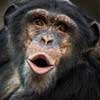
Chimpanzees share 98% of their DNA with humans, making them incredibly intelligent. They exhibit complex social behaviors, use tools, and have sophisticated communication methods. Chimpanzees are known for their ability to learn sign language, solve problems, and exhibit self-awareness by recognizing themselves in mirrors. Their social structures and the way they teach and learn from each other are remarkably similar to human behaviors.
2. Dolphins

Dolphins are renowned for their high intelligence, complex social interactions, and advanced communication skills. They use a variety of vocalizations and echolocation to navigate and hunt. Dolphins can understand complex commands, recognize themselves in mirrors, and even exhibit problem-solving skills. Their ability to learn tricks, understand human gestures, and exhibit playful behaviors in captivity highlights their cognitive capabilities.
3. Elephants
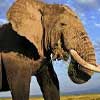
Elephants are known for their impressive memory, emotional intelligence, and complex social structures. They can recognize themselves in mirrors, show empathy, and have been observed mourning the deaths of herd members. Elephants use tools, communicate with each other through vocalizations and vibrations, and can solve problems. Their ability to learn from and adapt to their environment is a testament to their intelligence.
4. Ravens
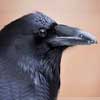
Ravens are among the most intelligent birds, exhibiting problem-solving skills, tool use, and complex social behaviors. They can plan for the future, remember faces, and mimic sounds. Ravens have demonstrated the ability to solve puzzles that require multiple steps and use tools in innovative ways. Their cognitive abilities rival those of great apes in some aspects, particularly in understanding and manipulating their environment.
5. Octopuses

Octopuses are highly intelligent invertebrates known for their problem-solving abilities, use of tools, and escape artistry. They have a large brain relative to their body size and exhibit behaviors such as unscrewing jars, navigating mazes, and camouflaging themselves. Octopuses can learn through observation and experience, showcasing a level of intelligence uncommon in marine animals.
6. Parrots
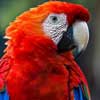
Parrots, particularly African Grey parrots, are known for their ability to mimic human speech and understand complex concepts. They can learn a wide range of words, recognize objects, and even perform simple arithmetic. Parrots use their problem-solving skills to interact with their environment and exhibit social behaviors that demonstrate their intelligence.
7. Pigs

Pigs are often underestimated in terms of intelligence, but they are highly social and capable of complex behaviors. They can learn tricks, solve puzzles, and navigate mazes. Pigs have excellent long-term memory, exhibit empathy, and can understand symbolic language. Their cognitive abilities make them comparable to dogs in terms of trainability and emotional intelligence.
8. Dogs

Dogs are known for their loyalty, trainability, and ability to understand human emotions. They can learn a wide range of commands, perform tasks, and exhibit problem-solving skills. Dogs communicate through body language and vocalizations, and some breeds are capable of understanding hundreds of words. Their close relationship with humans has led to the development of sophisticated cognitive and social skills.
9. Crows
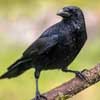
Crows are highly intelligent birds known for their problem-solving skills, use of tools, and ability to recognize human faces. They can plan for the future, use sticks to extract insects, and solve complex puzzles. Crows have demonstrated advanced cognitive abilities such as understanding cause and effect and exhibiting behaviors that suggest a high level of awareness and adaptability.
10. Rats

Rats are intelligent rodents capable of learning complex tasks and navigating mazes. They have excellent memory, can recognize their names, and exhibit problem-solving skills. Rats are used extensively in scientific research due to their cognitive abilities and social behaviors. They can learn from each other and adapt to changing environments, showcasing their ability to process information and make decisions.
